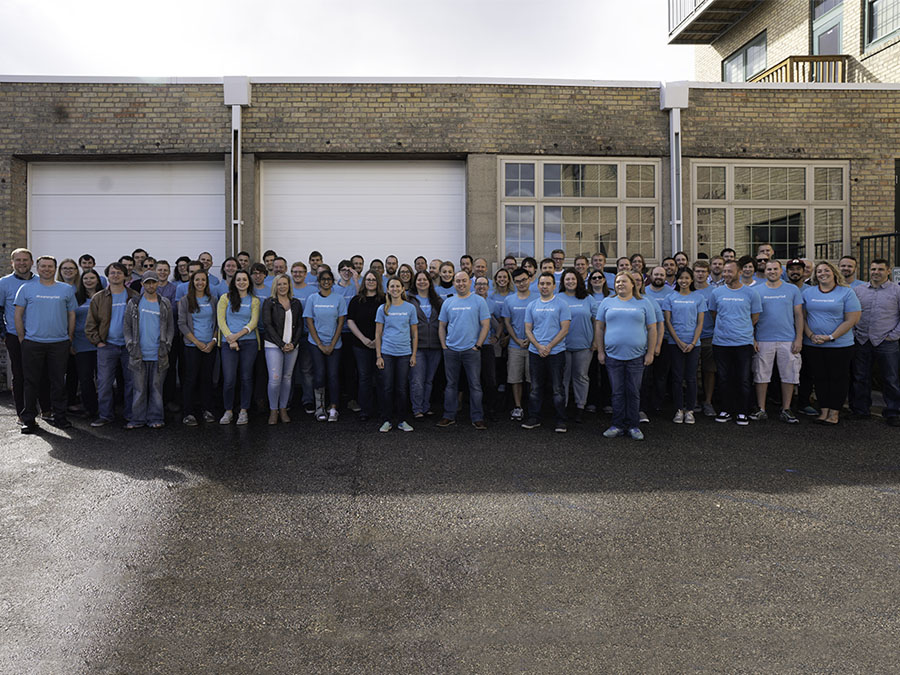Inspiration engineered: The Myriad Mobile story
Myriad Mobile is a story sure to encourage any entrepreneur. The combination of relentlessly pursuing a successful business model and accessing the ‘myriad’ of financing options to accomplish them has been their recipe for success.
Please tell us about Myriad Mobile. When did you start? What services do you provide?
We started Myriad in 2011. We are a full-service custom software development agency for the agriculture industry. A better way to describe what we do is that we provide “World class agtech, from the Heartland.”
We offer mobile and web development, consulting, and design and have completed over 600 projects since our inception. In 2017, we launched Bushel, the grain industry’s first software platform that allows grain elevators, cooperatives and ethanol plants to connect with their growers digitally to provide real-time business information and communication capabilities. Today we have 60 elevators signed onto the Bushel platform, which comprises 1,000+ locations throughout North America.
What was your business’ original mission and how has that evolved?
We started with several business ideas. One early idea was to help companies find good ideas for advertisement and aggregate them on the internet. We also thought we could run a business that was focused on turning ideas from engineering students into products. In addition to that, we created a video game for Android devices and it was available for purchase on the app store for $.99. We thought we were going to make a million dollars from that game. All of them failed. Miserably failed. However, we learned a lot from those experiments in failure. We call it “flearning” (Failure + Learning = Flearning). We knew that mobile wasn’t going away anytime soon. We were one of the early companies to take a dedicated focus on native mobile software development. We believed that Blackberry would continue to lose market share. We believed that Android and iOS were the clear winners. And we firmly believed that we could build a software company in North Dakota.
What was the pivot point?
The pivot point was when we (Ryan Raguse and Jake Joraanstad) met as competing companies on a potential project. We realized that we needed each other’s talents. Ryan needed engineers. Jake needed business development. We combined our strengths, and thus Myriad was formed.
Do you prefer to pursue funding or build organically, and why?
We believe the best way to build a business is organically. The only reason you pursue funding is when you realize the opportunity and timing are so right that you can’t take your time and let the business grow slowly and steadily. We believe you should take funding for acceleration, not because you don’t have customers.
Discuss the interaction between your lender and Bank of North Dakota, the programs you accessed and how the process worked for you.
We worked with North Dakota Development Fund, the Bank of North Dakota, the SBA Guarantee program, the Growth Initiative Fund, the Greater Fargo Moorhead Economic Development Corporation, and Choice Financial. All entities were great to work with. Choice Financial was exceptionally good at spending the time needed to understand our business and the programs offered through the Bank of North Dakota and how the programs offered could create a realistic scenario to help grow our business.
What would you say is the single most influential factor in your business’ success?
Knowing when to take people’s advice. But also knowing when not to take advice and when to believe in yourself and your team.
What are the three smartest decision you’ve made with your business?
- Hiring an experienced president to help operate the company and then consistently hiring and promoting great people to help continue the growth of the company.
- Taking a dedicated focus in the agriculture industry.
- Committing to pursue Bushel as a product when we weren’t sure the path was there. It was not clear that it was going to work but we charged ahead, committed to it, and pivoted when needed.
Click here to hear how REMI is predicting the future
 An official website of the State of North Dakota
An official website of the State of North Dakota
